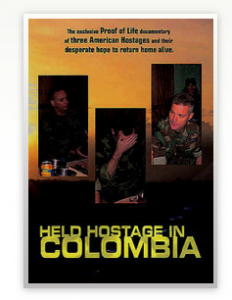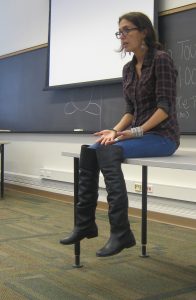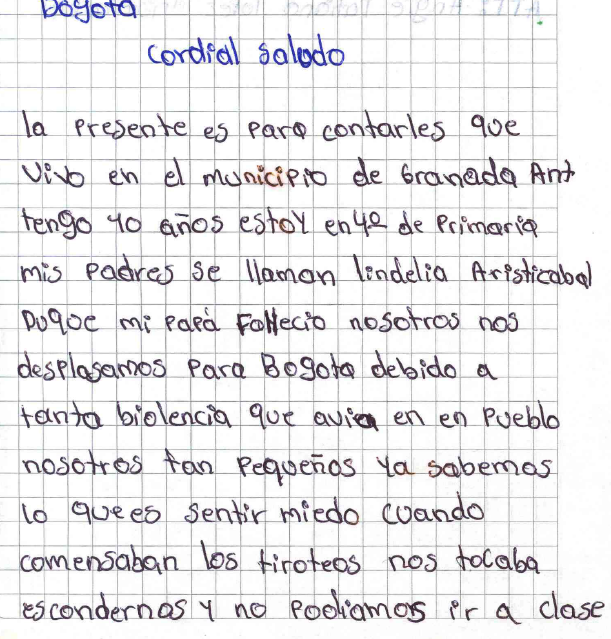- Teaching What You Thought You Knew (Part 4): El beísbol
- Teaching What You Thought You Knew (Part 3): Colombian Music, or how I learned to appreciate Hip Hop after 40
- Teaching What You Thought You Knew (Part 2): Colombian Film
- Teaching What You Thought You Knew (Part 1): Colombia
HISP 205 is a conversation class. As the teacher, my goal for the inclass portion was that whatever I brought for my students to see, hear, witness… that those things needed to be catalysts, springboards, starting points for comments, conversation, and debate… to get people to talk and participate.
One of the best ways of doing just that, I thought, would be through assigning films. The problem was…I knew nothing about film. And really nothing about contemporary Colombian film.
Netflix has a wonderful and growing collection of Spanish-language films, but to my regret a simple search for “Colombia” would yield titles such as these:


…precisely the kinds of films I wanted to AVOID when talking about Colombia. These films perpetuate the negative and violent stereotype, la mala fama, the idea that Colombia is nothing more than cocaine, coffee and violence.
I was grateful to learn (after a lot of digging) that Colombia has had a renacimiento of sorts in the arts, especially in film. And what was also remarkable was that many of the filmmakers were interested in exploring the timeperiod from when I was last there (in the 1980s, a very turbulent time) til present day (equally turbulent, but not for the reasons TIME magazine would like you to believe.)
I should mention that given my new found ignorance of all that I thought I knew, and three weeks to go before the term began, I adopted a “I wonder what would happen if” policy when planning …a policy that I am happy to report proved to provide some pretty wonderful surprises for me and for my students.
What follows here are the names of three films about Colombia, and the activities we did so that we were not just watching movies and making conversation, rather we were engaged in a conversation about a country and a history none of us truly knew, but instead learned together.
La sombra el caminante (Ciro Guerra, 2005)
Per Wikipedia, more than 3 million people out of Colombia’s population of approximately 40 million have been internally displaced since 1985, making it the country with the second highest internally displaced population in the world after Sudan. Paramilitary groups have been linked to the violence that has resulted in displacements. I wanted to find a film that would touch upon this topic and, of course, promote conversation. La sombra is indeed that film.
La sombra has been described as “Beckett goes to Bogotá.” It is filmed in black and white and the story of two idiosyncratic, displaced outcasts that live in el centro of Bogotá. The movie is unsettling but not in a Hollywood-all-too-graphic kind of way. It makes you think and it makes you feel for these individuals whose lives have been forever turned upside down by the violence in their country.
I felt the need to try and find a human connection for my students to make sure that the message of this film was not written off or forgotten. To add another dimension to the issue of displacement, as well as to talk about the effects of violence on a variety of bogotanos, I also introduced my students to an incredible archive of letters, Las cartas de la persistencia (The Letters of Persistance).
What is extraordinary about this collection is the fact that it represents the letters of over 5,000 Colombians, a variety of social and economic strata, each creating a personal letter to explain how violence had affected them, but also to say how they were going to endure and persevere despite that violence. The project asked Colombians to explain how it could be that as a country they could continue on despite these atrocities, despite such hardship.
Many of the handwritten letters have been scanned and digitized and are available for download. They are heartbreaking, funny, moving, upsetting, eye-opening…and above all… human.

Finally, to round out our conversation of “desplazamiento” in Colombia, we turned to Skype. Not just any random Colombian on Skype, but the folks who run La Fundación Pies Descalzos (The Barefoot Foundation) for and with Shakira. Yes, that Shakira who is from Baranquilla, Colombia and who has created a foundation to build schools in order educate some of the children who have been displaced.
While we had planned to speak with the Program Director of Pies Descalzos she unfortunately could not meet with us at the last minute. In her absence, one of her assistant drectors did speak with the class on Skype. Curiously he presumed that we, like most Americans,did not know about the desplazados nor where Colombia was on a map, not did he ask. If nothing else, the Skype call was revealing to my students for what he presumed about us.
The people in La Fundación are happy to speak with individuals interested in their cause. As this was the first group Skype call we had organized for this class, it was a bit awkward and difficult for them, a great starting point for us, and beneficial nonetheless.
María Full of Grace (2004)
Colombia, to some, is synonymous with cocaine. María presents its viewers with a human side to the drug trafficking trade, and tells a story about the lives and the motivations of the many “mulas” or drug mules who risk their lives in order to better themselves financially.
This is a hard film to watch, and it is also easy for the viewer to comfort himself or herself by thinking well, this was a films from 2004…things must be better now, right…right?
Well no they are not. Hundreds of people continue to be detained in airports in New York City and elsewhere on the suspicion of being mules. Some have happy endings…many others do not. And through it all there is one person who continues to provide support (and many times the funds for a decent funeral) to these mulas: The Mayor of Little Colombia (Jackson Heights, Queens), The Undertaker of the Mules, Don Orlando Tobón.
Don Orlando has a small part in María where he plays himself (except he is named Don Fernando in the film). During a “I wonder what would happen if I just googled him” moment I was able to locate and to call Don Orlando and was delighted to know that he would agree to speak with my students over the phone.
Using Skype to call a landline, this time the class organized itself as to who would ask what question, who would initiate the call, who would do the wrap up and say our thank yous. Don Orlando was exceedingly gracious and attentive, the content of the film was made accessible and real, the students handled an interview via a phonecall with grace and purpose, and their conversational skills grew.
Entre Nos (2010)
I found this film via Netflix streaming and I have to be honest, I was preparing for the worst. I mean given the titles they featured before (see above), I had reason to be skeptical.
I am delighted to say that my skeptism was totally unfounded. This is a lovely, honest, beautifully crafted film that is based on the true story of a Colombian family coming to the US and suddenly finding themselves homeless, penniless and alone.
The fact that it was based on a true story piqued my interest. I wondered, as I had with other films, what would happen if I tried to get in touch with someone from the film? Could it be possible?
Again, to my delight, persistence paid off. As I told my students, amazing things happen when you just keep hitting the “for more info click here” button and keep bothering people with emails. We were honored to have a visit from the actor/director/filmmaker Paola Mendoza and extremely lucky to have her spend an entire day with our students.

Her visit was extraordinary, and an amazing culmination to the class “meeting” people on Skype. Paola listened, she was patient, and she asked follow up questions to make sure the students’ understood..she even asked questions of them. An accomplished actor, there were no airs, no pretensions… she was approachable and honest and candid and fluidly bilingual.
If you show Entre Nos to your students I would encourage you to contact her colleague Joseph La Morte here and inquire about a screening and a visit to your campus. You will not be disappointed.
Am I better scholar of Colombian film thanks to these experiences? Well, no, but I did learn many things about Colombia since the time I left that I never would have known otherwise. And I made sure the films we watched were not just passive viewing experiences, rather, there were opportunities for all of us to speak to and converse with and learn from real people involved in those stories as well.
Next up: Teaching What You Thought You Knew (Part 3) Colombian Music (or how I learned to like Spanish language hip hop even though I didn’t think I would)





Thank you Barbara for this great series. I am always inspired by your stories. I am going to definitely be out of my comfort zone this semester with one of my courses, and your posts are helping me with information and encouragement.
I’m amazed at the wonderful success you have had with Skype. Let’s hope I can do half as well with my course, and I will be happy.
Can I be a student in any of your courses? 🙂
You are very kind, Pilar. Thank you for your kind words. Perhaps surprisingly, I need that kind of encouragement as I gear up for another semester, so thank you.
Funny you should ask about being a student from afar. I would LOVE that. I would love to see if it would be possible to create a language class that had a face to face presence but also an online community that followed along and did the same assignments. Some akin to the Jim Groom/ Martha Burtis ds106 class . What do you think? Could it be possible? Just -think- of all of the Skype partners we could create. Hmmmmm.
I am thoroughly enjoying reading your blogs, especially this series on “Teaching what you thought you knew…”. I am working on my Masters for Teaching a Foreign Language Spanish, at Monterey Institute of International Studies (MIIS),and your ideas are very inspirational.
I am currently teaching an Intermediate Spanish communication class to fellow MIIS students in a program called BUILD http://www.miis.edu/community/world/stories/node/23763. I am constantly looking for new ways to incorporate authentic material as a springboard for meaningful conversation practice. I love the ideas you have presented! And skype is a very feasible way to connect with people all over the world!
What a great reminder that just because you’ve been to x country, if it has been a number of years, it is important to become up to date with what has gone on in the country.
I first became aware of your blogs from a post that my CALL and Pedagogy teacher, Sarah put on our class blog. http://poweredvoices.wordpress.com/2011/10/13/from-knowledgable-to-knowledge-able-learning-in-new-media-environments/#comments. Now that I have found your site, I intend to be an avid reader. Thanks!
Thank you so much for your kind words, Celia.
I am teaching the course again this semester and plan to blog about what we have done this semester as soon as I catch my breath. I have added a few new (Colombian) films and have some new reactions from the students to some of the “old” ones.
Thank you for reading. Please keep commenting!